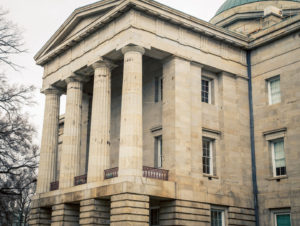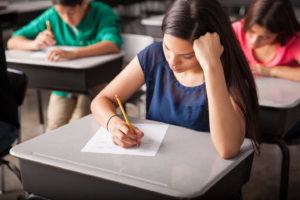Time to help South Carolina students dream big with school choice
(reimaginED) – South Carolina parents and students are ready for summer. In Greenville, high schools like Eastside and Riverside held their graduations last week. Charter schools around the state…

(reimaginED) – South Carolina parents and students are ready for summer. In Greenville, high schools like Eastside and Riverside held their graduations last week. Charter schools around the state also had their graduation ceremonies and year-end events in recent days.
But not all the important education work is finished for this school year.
At the Statehouse, state lawmakers are considering a proposal that would allow parents to choose how and where their children learn. State officials will be debating different versions—one that makes only modest options available, and another with provisions to meet the needs of a student body that has seen student scores decline dramatically coming out of the pandemic.
Students need lawmakers to dream big.
According to researchers, the drop in student achievement nationwide over the last two years is comparable to the score declines among Louisiana students after Hurricane Katrina in 2005. COVID was a storm that affected students all over the country. Researchers found that, on average, math scores among sixth graders dropped by 3.3 points, while eighth grade scores fell 4.5 points. Third grade reading scores fell by 3 points, and eighth grade scores decreased by 1.5 points.
But in findings that have special meaning for South Carolina, the gap between children from higher income homes and those from lower income households expanded by 15 percent in reading and 20 percent in math. South Carolinians are well aware of the poverty and the persistently low-performing schools found all along the I-95 corridor.
The pandemic did not result in students falling between the cracks—COVID opened a gaping hole in the floor and pushed children through it.
Lawmakers should give families more flexibility to help their students, no matter their background or family income level.
State officials are debating whether to create a small, pilot program offering K-12 private school scholarships or to allow children access to education savings accounts (ESA). With an ESA, parents can use their child’s portion of the state education formula to purchase tutoring services, pay for education therapists, buy textbooks and other curricular materials, find online classes, pay tuition at a private school, and more.
They can also customize their child’s learning experience. Just over the state line to the north, families in North Carolina can use ESAs to help children with special needs find therapy and other education services to meet a student’s unique needs. In the first two years that the accounts were available, 64 percent of participating families used them for more than one product or service, another flexible feature of the accounts.
South Carolina lawmakers must consider the value of provisions that allow families to purchase computer hardware and pay for college entrance exams and not just private school tuition. Lawmakers should do more for families than create a temporary program that offers a small number of children the chance to attend a new school. State officials should give families a variety of options. And under the ESA proposal, the number of children who can take advantage of these opportunities increases every year.
During the pandemic, children in Arizona, Mississippi, and North Carolina using education savings accounts were able to continue their academic work with less interruption than children at assigned schools. One estimate finds that current students will earn some $10 trillion less in lifetime earnings due to learning losses from the pandemic. A figure this large is sure to harm the entire economy.
Imagine if more children had access to ESAs before the pandemic and could have avoided such staggering problems in terms of their achievement today and later in life. South Carolina lawmakers should keep this in mind as they debate a small, temporary program or a broader, flexible set of accounts that will allow students the chance to change the trajectory of their school career—and career later in life.
After the pandemic, students need reasons to think big. State lawmakers can lead by example.



